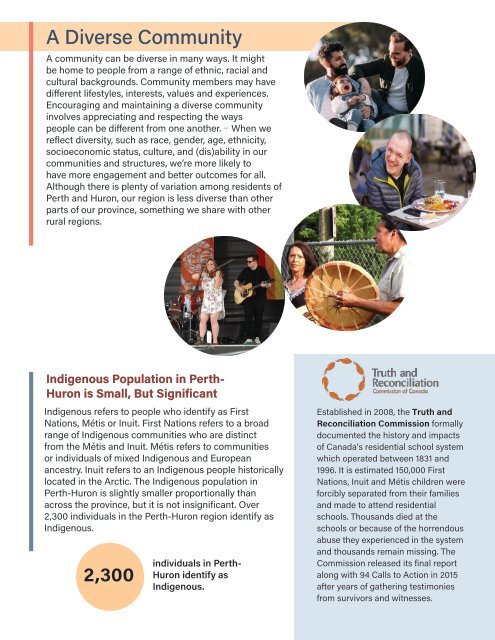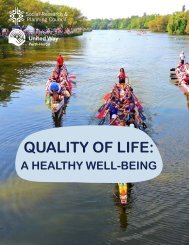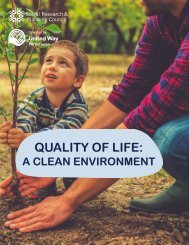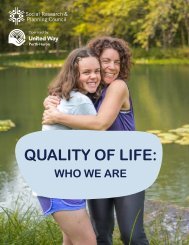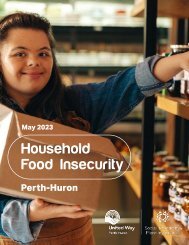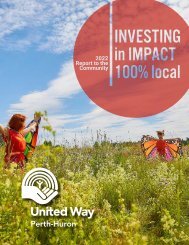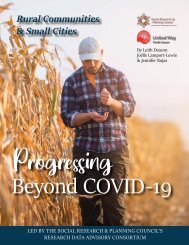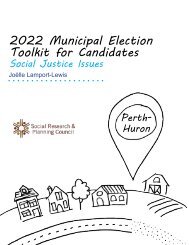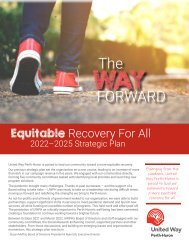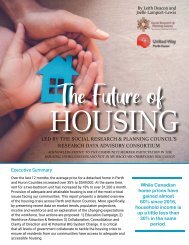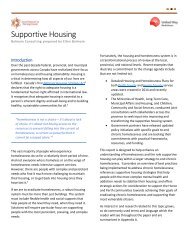Create successful ePaper yourself
Turn your PDF publications into a flip-book with our unique Google optimized e-Paper software.
A Diverse Community<br />
A community can be diverse in many ways. It might<br />
be home to people from a range of ethnic, racial and<br />
cultural backgrounds. Community members may have<br />
different lifestyles, interests, values and experiences.<br />
Encouraging and maintaining a diverse community<br />
involves appreciating and respecting the ways<br />
people can be different from one another. , , When we<br />
reflect diversity, such as race, gender, age, ethnicity,<br />
socioeconomic status, culture, and (dis)ability in our<br />
communities and structures, we’re more likely to<br />
have more engagement and better outcomes for all.<br />
Although there is plenty of variation among residents of<br />
Perth and Huron, our region is less diverse than other<br />
parts of our province, something we share with other<br />
rural regions.<br />
Indigenous Population in Perth-<br />
Huron is Small, But Significant<br />
Indigenous refers to people who identify as First<br />
Nations, Métis or Inuit. First Nations refers to a broad<br />
range of Indigenous communities who are distinct<br />
from the Métis and Inuit. Métis refers to communities<br />
or individuals of mixed Indigenous and European<br />
ancestry. Inuit refers to an Indigenous people historically<br />
located in the Arctic. The Indigenous population in<br />
Perth-Huron is slightly smaller proportionally than<br />
across the province, but it is not insignificant. Over<br />
2,300 individuals in the Perth-Huron region identify as<br />
Indigenous.<br />
2,300<br />
individuals in Perth-<br />
Huron identify as<br />
Indigenous.<br />
Established in 2008, the Truth and<br />
Reconciliation Commission formally<br />
documented the history and impacts<br />
of Canada’s residential school system<br />
which operated between 1831 and<br />
1996. It is estimated 150,000 First<br />
Nations, Inuit and Métis children were<br />
forcibly separated from their families<br />
and made to attend residential<br />
schools. Thousands died at the<br />
schools or because of the horrendous<br />
abuse they experienced in the system<br />
and thousands remain missing. The<br />
Commission released its final report<br />
along with 94 Calls to Action in 2015<br />
after years of gathering testimonies<br />
from survivors and witnesses.


